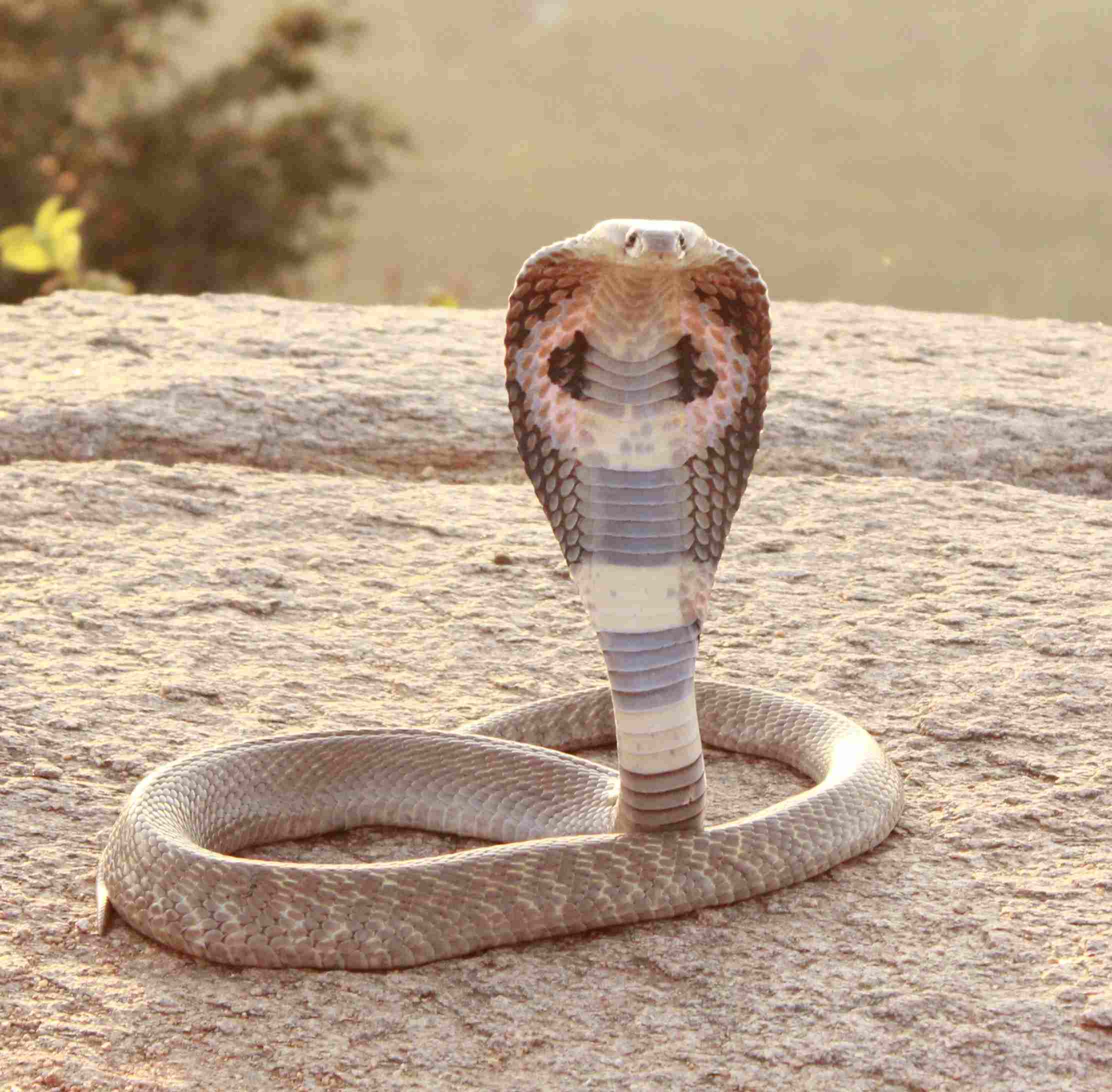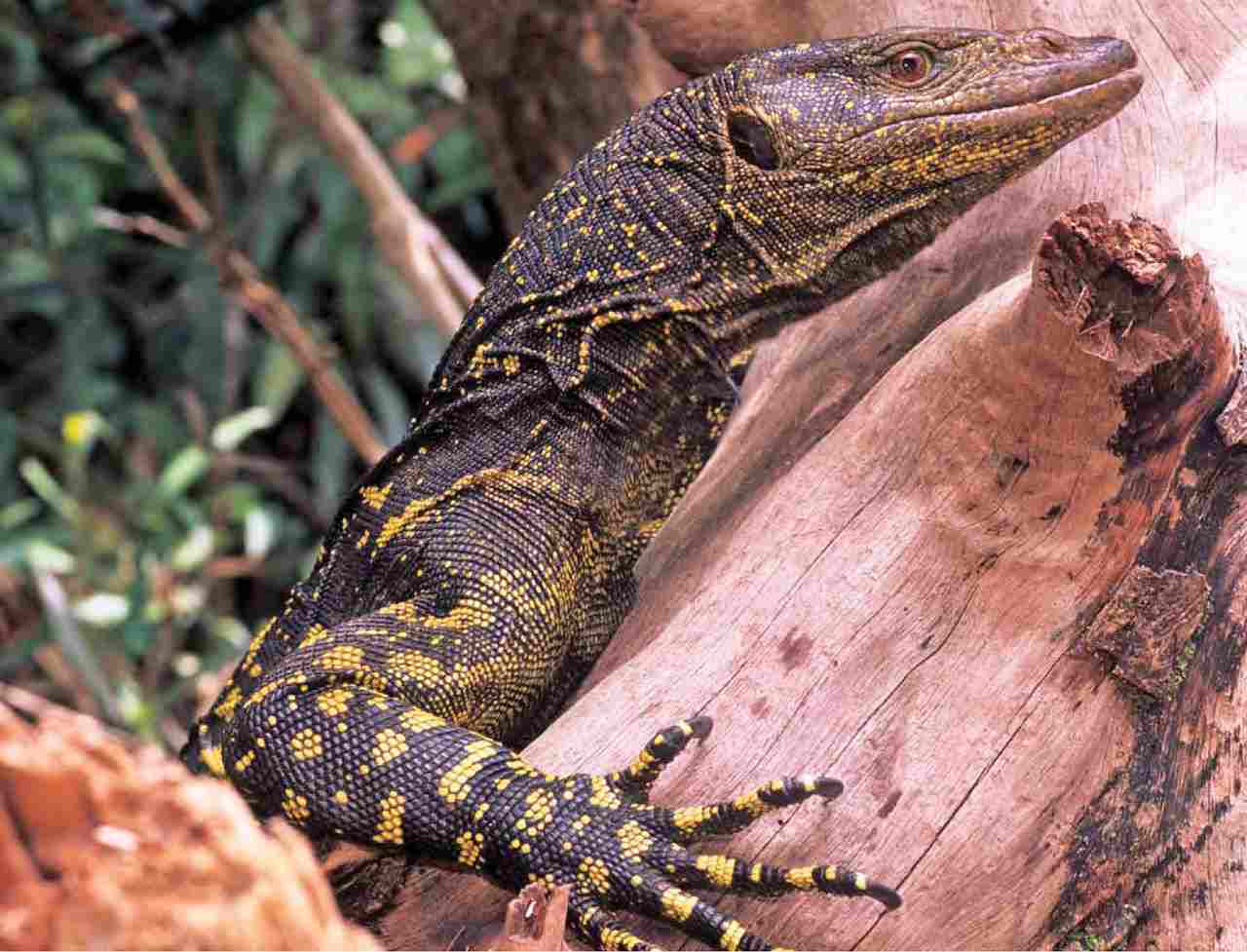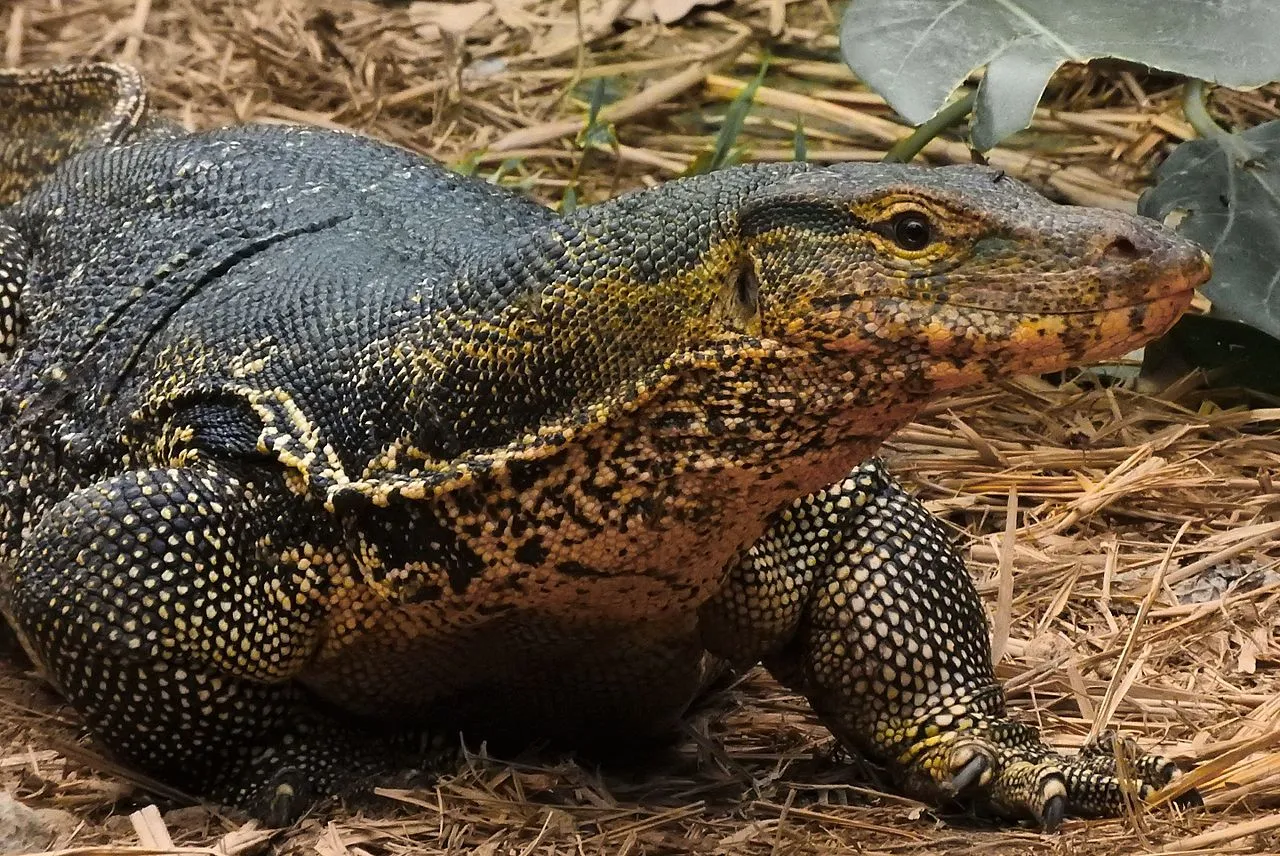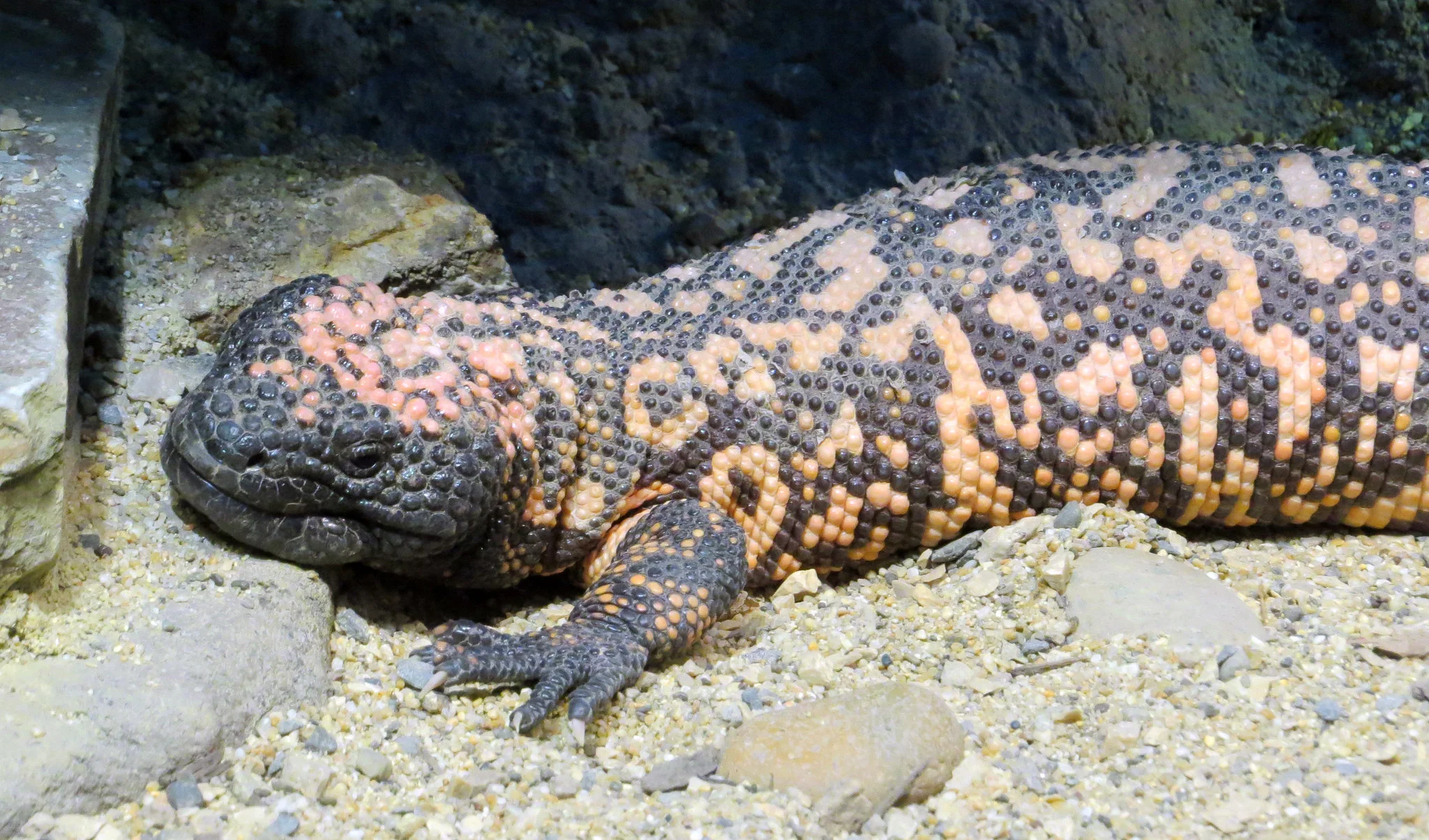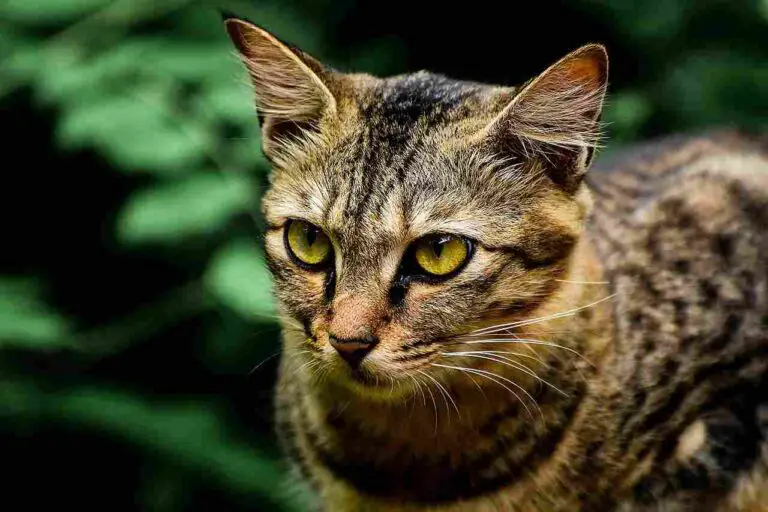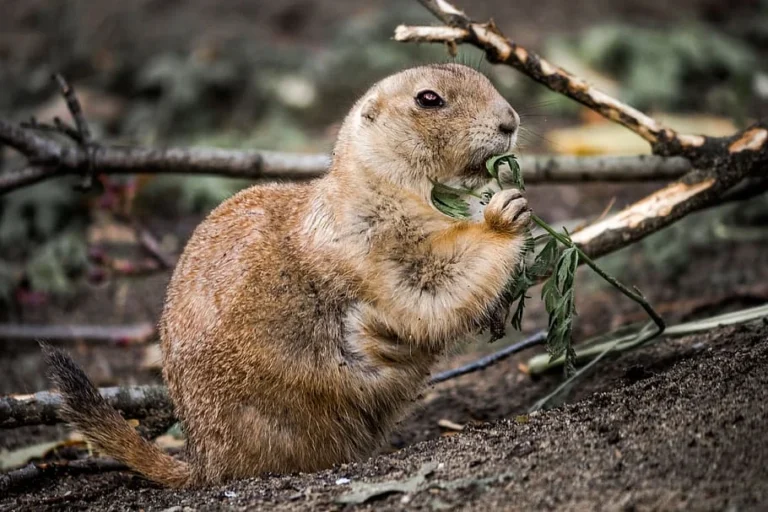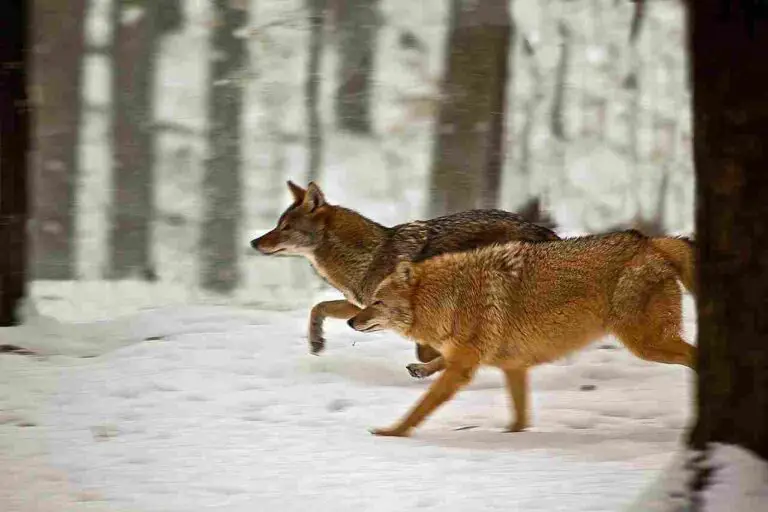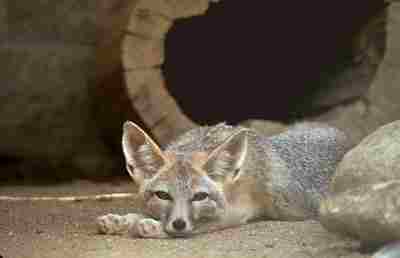Komodo Dragon Vs King Cobra Who Would Win, Overall Comparison
Contrasting the Komodo dragon, the largest monitor lizard globally, with the king cobra, the longest venomous snake, unveils distinctions in their roles as apex predators. While the king cobra possesses a highly dangerous venomous bite, the Komodo dragon’s larger size, superior strength, weight, speed, and more powerful jaws position it as the likely victor in a real-life confrontation. This comparison highlights the unique attributes of these formidable reptiles in their respective roles as apex predators.
I. Komodo Dragon vs King Cobra: Apex Predators with Unique Traits:
– The Komodo dragon and king cobra, both apex predators in their ecosystems, showcase distinct features that contribute to their effectiveness as formidable reptilian hunters.
II. Size and Length:
– The Komodo dragon holds the title of the largest monitor lizard globally, emphasizing its impressive size. In contrast, the king cobra is renowned as the longest venomous snake, showcasing its exceptional length.
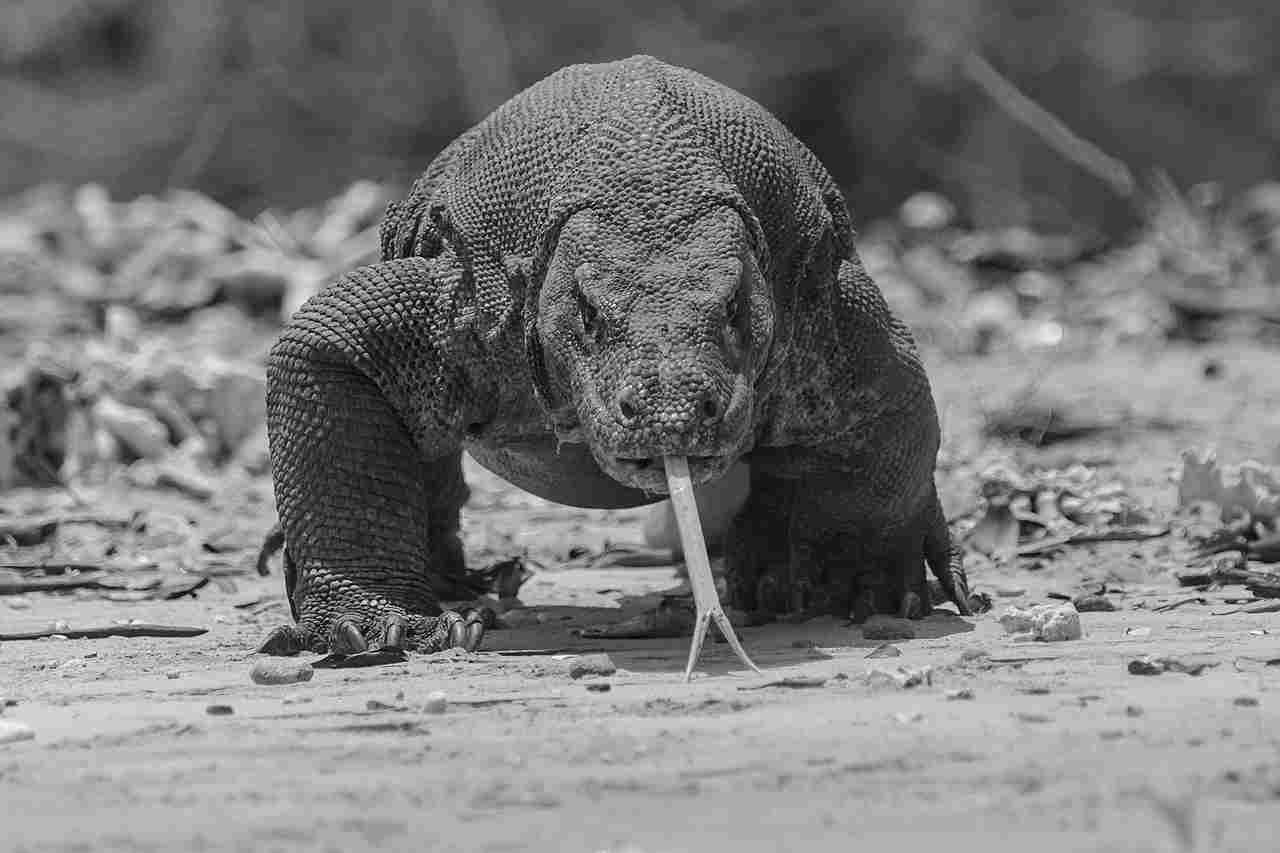
III. Venomous Capabilities:
– While the king cobra delivers a lethal venomous bite, the Komodo dragon is equally venomous, utilizing a combination of bacteria in its saliva to subdue and incapacitate prey. This dual venomous capability adds an additional layer to the Komodo dragon’s predatory arsenal.
IV. Size and Strength:
– The Komodo dragon’s larger size and superior strength give it a distinct advantage in a potential confrontation. This physical prowess contributes to its effectiveness in overpowering and subduing prey.
V. Speed and Agility:
– The Komodo dragon’s larger size does not compromise its speed and agility. In comparison to the king cobra, the Komodo dragon’s ability to move swiftly allows for efficient hunting and navigating its environment.
VI. Jaws and Predatory Adaptations:
– The Komodo dragon boasts larger and more powerful jaws, equipped for seizing and dispatching prey effectively. These predatory adaptations, combined with its size and strength, position the Komodo dragon as a formidable predator.
VII. Real-life Predator Superiority:
– In a real-life encounter between a Komodo dragon and a king cobra, the Komodo dragon is likely to emerge victorious due to its larger size, strength, speed, and powerful jaws. While the king cobra’s venom is potent, the Komodo dragon’s overall physical attributes provide a decisive advantage in a confrontation.
VIII. Conservation Significance:
– Recognizing the unique attributes of both Komodo dragons and king cobras is crucial for conservation efforts. Tailoring strategies to protect these apex predators contributes to the preservation of biodiversity and ecosystem balance in their respective habitats.
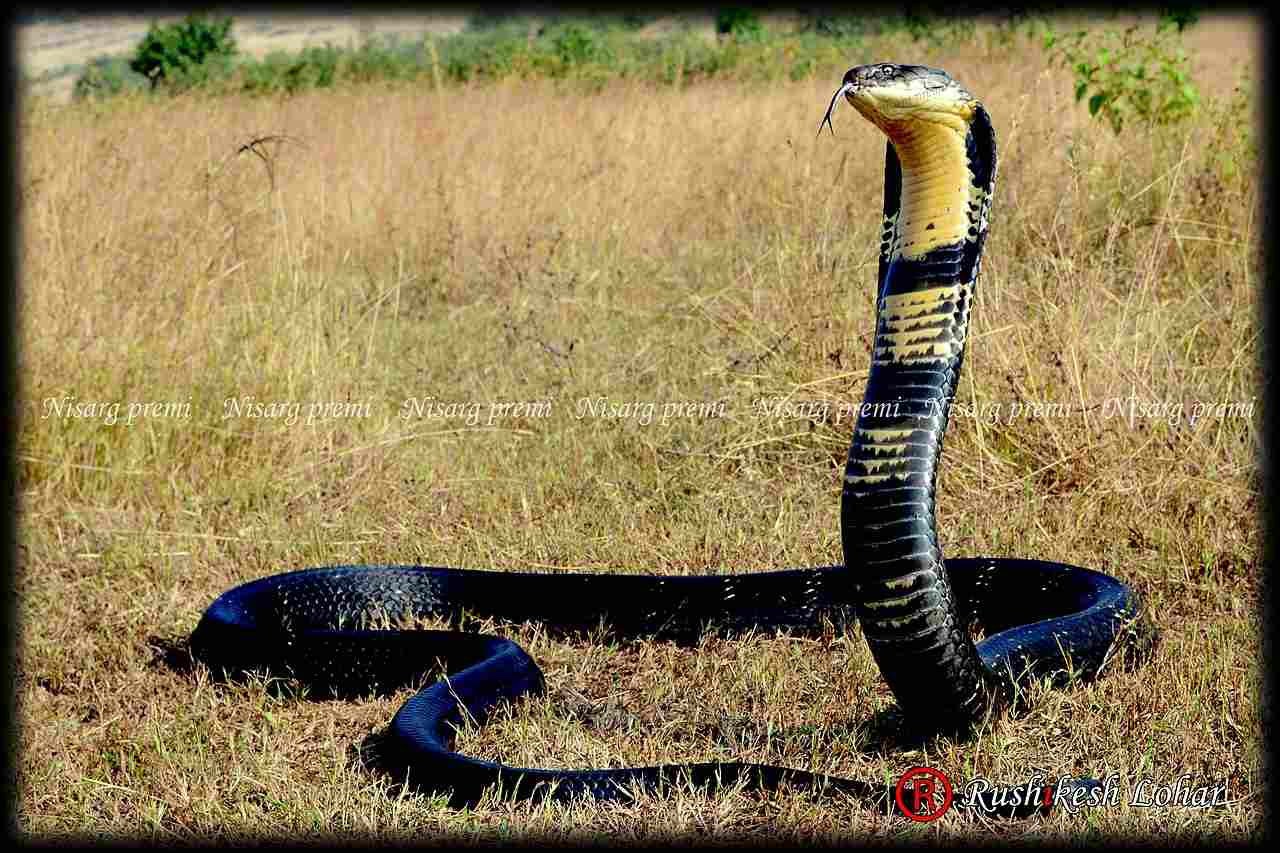
*Details of Comparison
| Criteria | Komodo Dragon | King Cobra |
| Taxonomy | Varanus komodoensis |
Ophiophagus hannah
|
| Appearance | Robust build, varied coloration, serrated teeth |
Slender body, olive to black color, distinctive hood
|
| Size | 2-3 meters | 3-4 meters |
| Weight | 70-90 kg | 6-8 kg |
| Bite Force (PSI) | 600 PSI |
Venomous bite, no quantified PSI
|
| Physical Offensive Advantages | Powerful bite, venomous saliva |
Venomous bite with neurotoxins
|
| Physical Defensive Advantages | Tough, scaly skin, tail for defense, |
Warning hood, agile movements
|
| Speed | Up to 20 km/h |
Up to 12 km/h (slithering)
|
| Agility | Moderately agile on land and in water |
Highly agile on land and in trees
|
| Senses | Excellent senses for hunting and navigating |
Excellent senses for hunting and navigating
|
| Overall Physical Capacity | Versatile for terrestrial and semi-aquatic environments |
Agile, adapted for arboreal and terrestrial movement
|
| Habitat Preference and Geographic Region | Dry grasslands, Indonesian islands |
Various environments, South and Southeast Asia
|
| Tracks | Clawed tracks | Slithering trail |
| Lifespan | 20-30 years | 20-30 years |
| Mode of Feeding | Carnivorous, use venom for subduing prey |
Carnivorous, use venom for subduing prey
|
| Intelligence | Demonstrates higher cognitive abilities |
Limited cognitive studies
|
| Social Behavior | Generally solitary |
Generally solitary
|
| Mode of Reproduction | Oviparous, minimal parental care |
Oviparous, minimal parental care
|
| Proximity to Human-Inhabited Areas | Remote islands |
Proximity to human habitats, especially in rural areas
|
| Behavior Toward Humans | Generally avoidant, can become aggressive if threatened |
Generally avoidant, can become aggressive if threatened
|
| Danger Posed to Humans | Potentially dangerous, venomous bite with infectious saliva |
Highly venomous bite, can be fatal without prompt treatment
|
| Associated Precautions | Caution advised in natural habitats, avoid provoking or cornering |
Be aware of their presence, seek professional help if encountered
|
| Conservation Status | Vulnerable |
Not globally assessed; threats include habitat loss
|
1. Taxonomy:
Komodo Dragon:
Kingdom: Animalia
Phylum: Chordata
Class: Reptilia
Order: Squamata
Family: Varanidae
Genus: Varanus
Species: V. komodoensis
King Cobra:
Kingdom: Animalia
Phylum: Chordata
Class: Reptilia
Order: Squamata
Family: Elapidae
Genus: Ophiophagus
Species: O. hannah
2. Appearance:
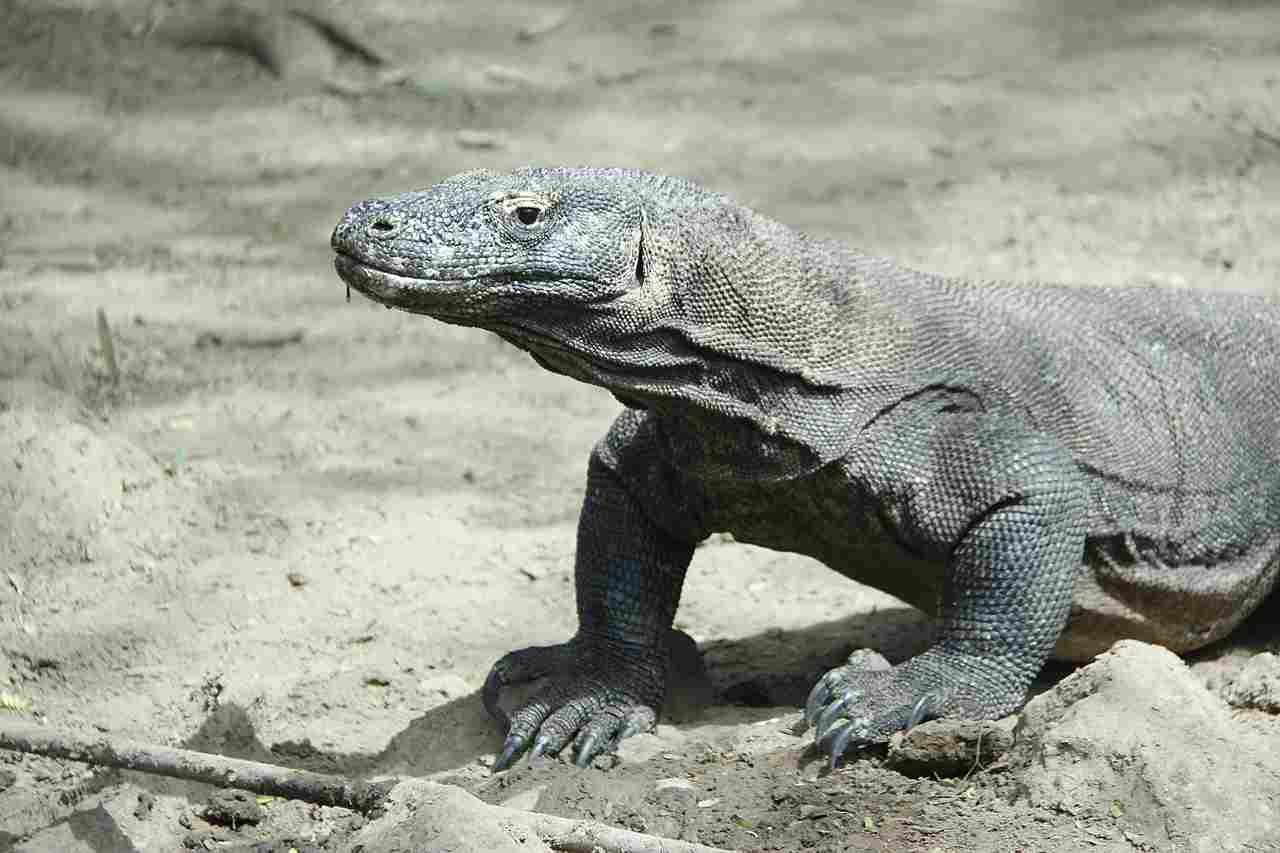
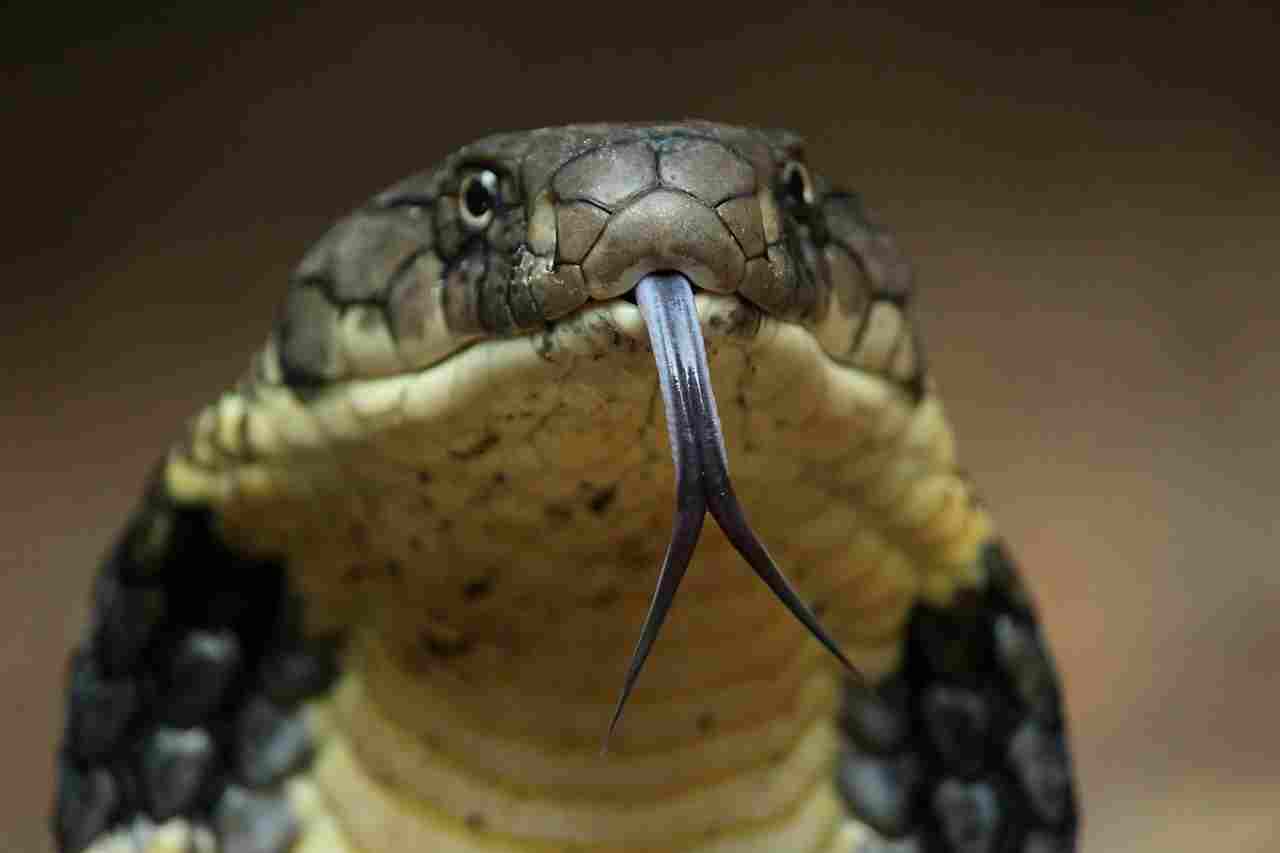
Komodo Dragon:
Robust build, scaly skin, and a long tail.
Varied coloration, including gray, green, and brown.
Distinctive serrated teeth.
King Cobra:
Slender body with smooth scales and a distinctive hood.
Olive to black color with yellow bands.
Long fangs, capable of delivering potent venom.
Comparison:
Both exhibit reptilian traits but differ in body shape and coloration.
Komodo Dragons have a sturdier build, while King Cobras are more slender and have a hood.
Ecological Implications:
Camouflage helps Komodo Dragons during hunting and ambush.
King Cobras use their hood for threat display and to intimidate predators or competitors.
3. Size:
Komodo Dragon:
Average length of 2 to 3 meters (6.6 to 9.8 feet).
Males are generally larger than females.
King Cobra:
Average length of 3 to 4 meters (9.8 to 13.1 feet).
Females are slightly larger than males.
Comparison:
King Cobras tend to be longer on average compared to Komodo Dragons.
Ecological Implications:
Size influences the prey spectrum and interaction with other species in their ecosystems.
4. Weight:
Komodo Dragon:
Average weight of 70 to 90 kilograms (154 to 198 pounds).
King Cobra:
Average weight of 6 to 8 kilograms (13 to 18 pounds).
Comparison:
Komodo Dragons are significantly heavier than King Cobras.
Ecological Implications:
Weight affects mobility, hunting strategies, and the ecological niche each species occupies.
5. Bite Force (PSI – Pounds per Square Inch):
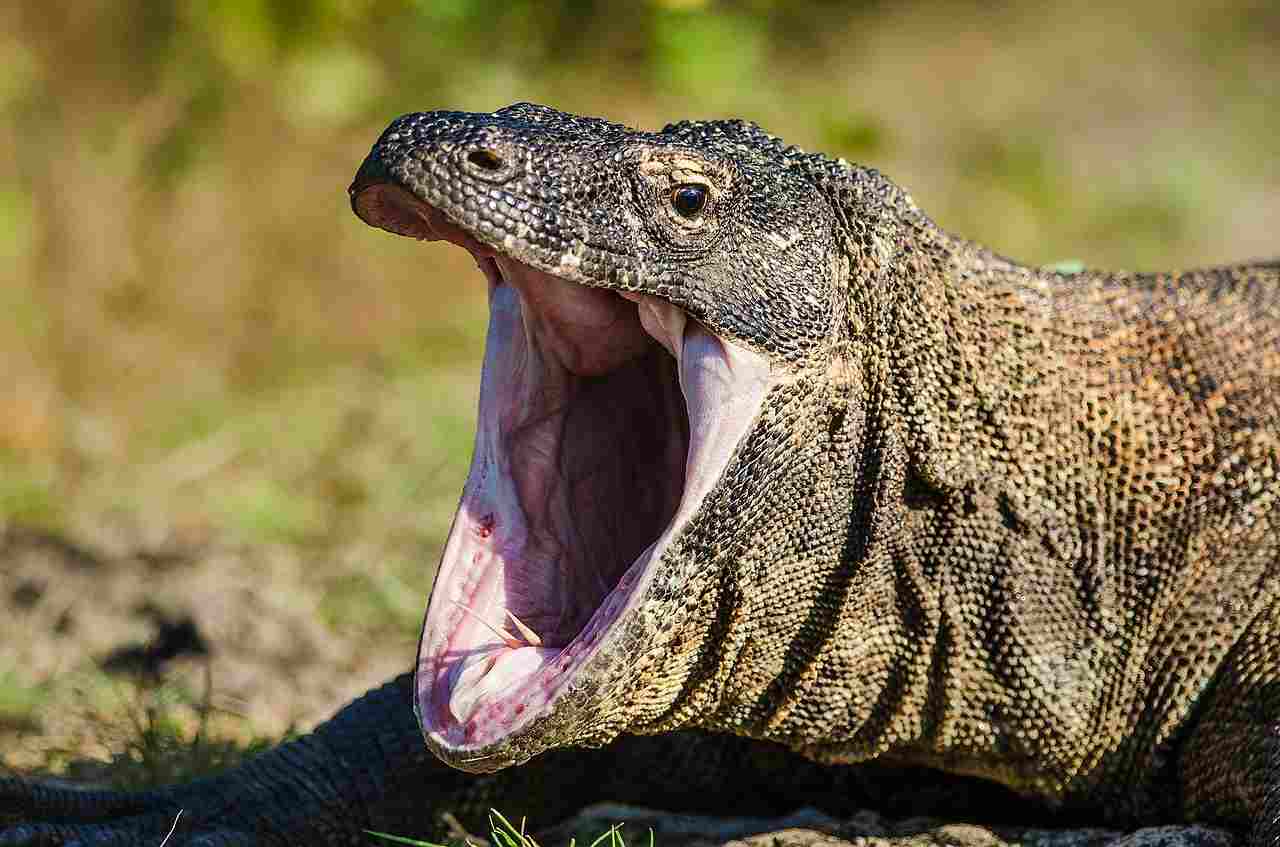
Komodo Dragon:
Bite force estimated around 600 PSI.
King Cobra:
No quantified bite force, but the venom is potent.
Comparison:
Komodo Dragons have a measurable bite force, while King Cobras rely on venom injection.
Ecological Implications:
Bite force influences hunting techniques and the ability to subdue prey.
6. Physical Offensive Advantages:
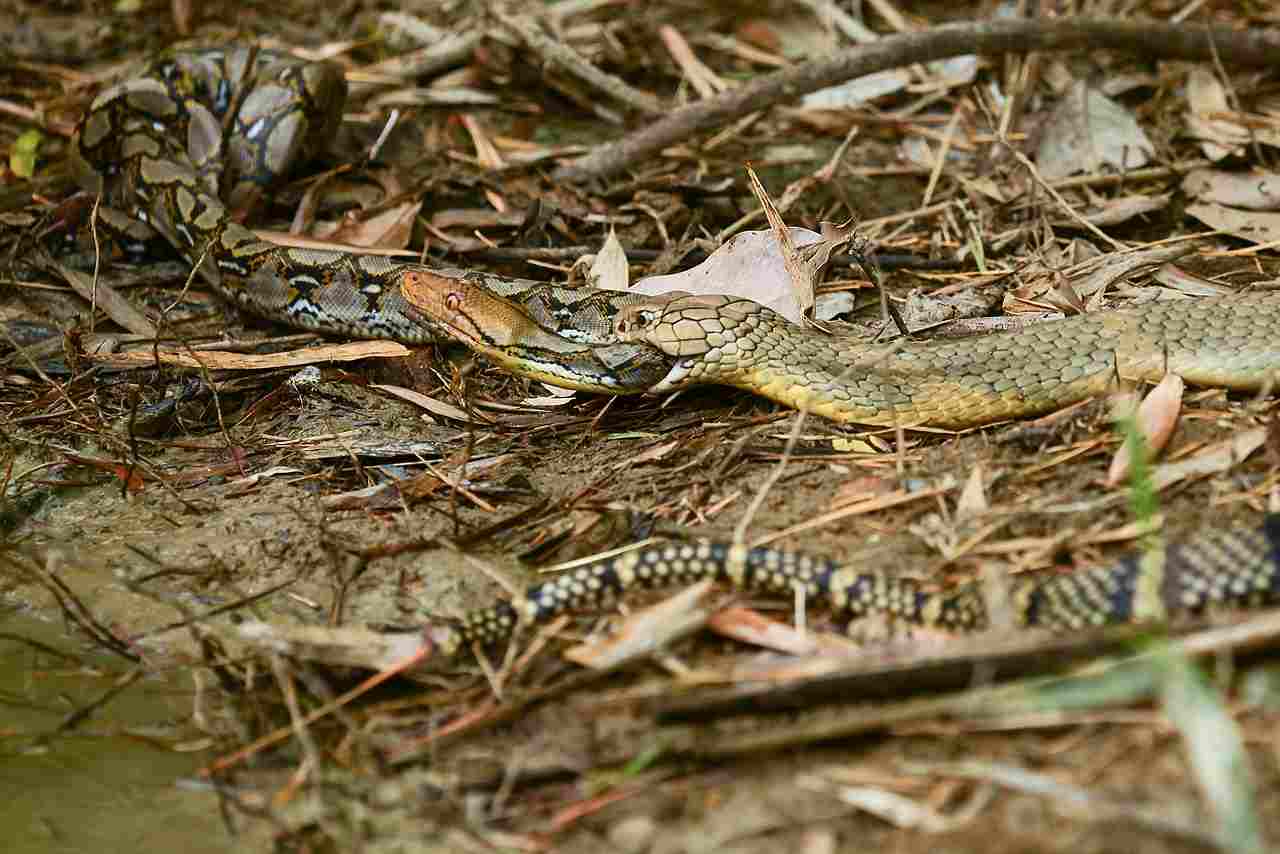
Komodo Dragon:
Powerful bite with serrated teeth.
Venomous saliva containing bacteria, causing lethal infections.
King Cobra:
Venomous bite with potent neurotoxins.
Long fangs for effective venom delivery.
Comparison:
Komodo Dragons use both bite force and venom, while King Cobras primarily rely on venom for offense.
Ecological Implications:
Different offensive strategies contribute to their roles in ecosystems, affecting prey selection and competition.
7. Physical Defensive Advantages:
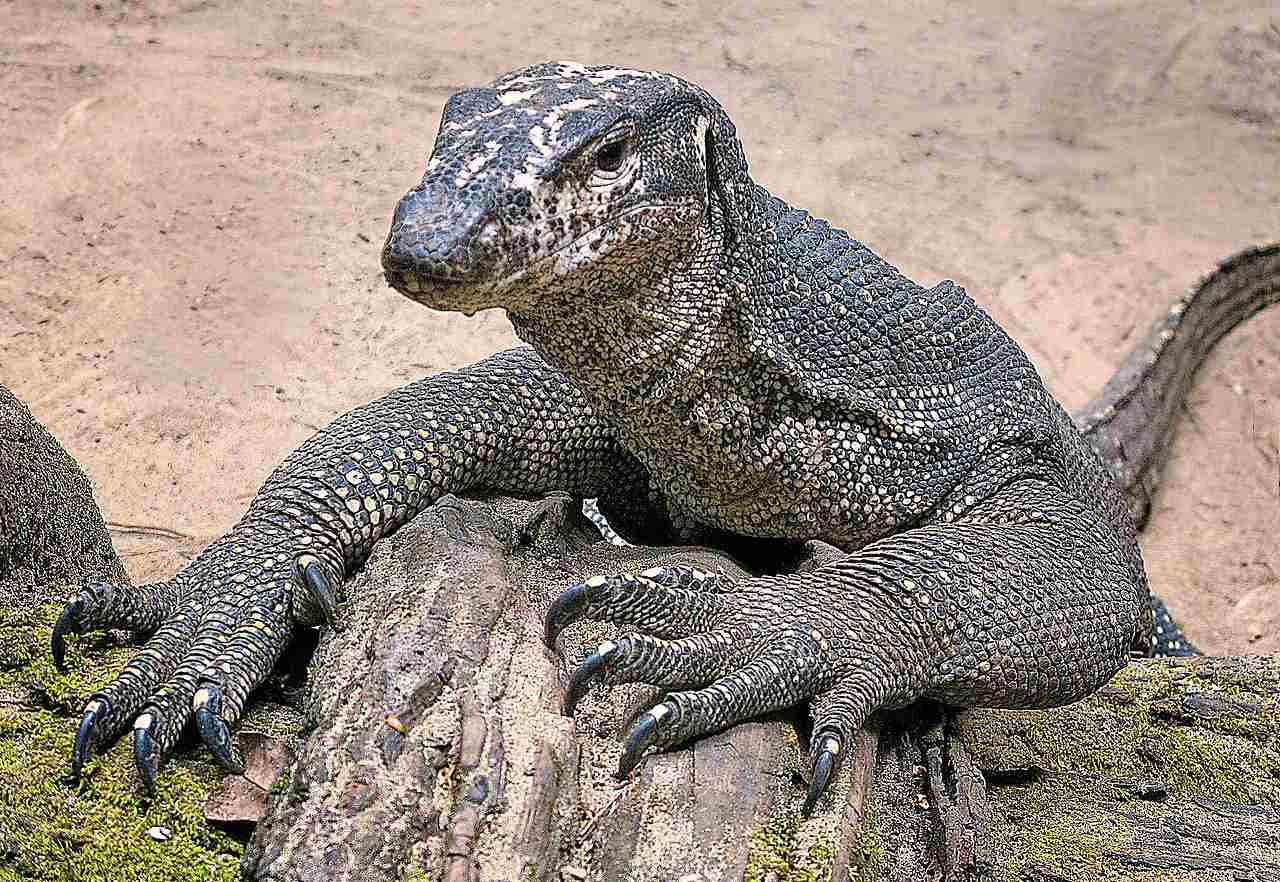
Komodo Dragon:
Tough, scaly skin provides a degree of protection.
Tail used for balance and defense.
King Cobra:
Warning hood used to deter threats.
Quick and agile movements for evasion.
Comparison:
Komodo Dragons have sturdy physical defenses, whereas King Cobras rely on agility and threat displays.
Ecological Implications:
Adaptations for defense impact interactions with predators, competitors, and environmental challenges.
8. Speed (Km/hour or Mile/hour):
Komodo Dragon:
Can reach speeds up to 20 km/h (12 mph) in short bursts.
King Cobra:
Agile and swift, capable of slithering at speeds up to 12 km/h (7.5 mph).
Comparison:
Komodo Dragons are generally faster on land compared to the slithering movement of King Cobras.
Ecological Implications:
Speed influences hunting success, evasion of predators, and territorial movements.
9. Agility:
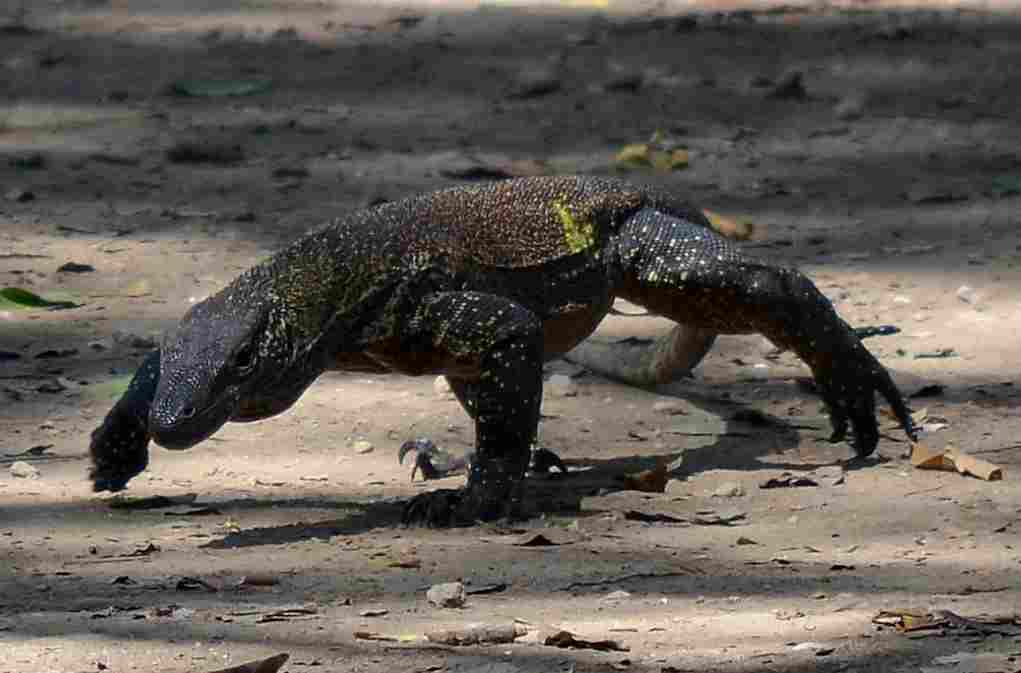
Komodo Dragon:
Moderately agile with the ability to climb trees.
Agile in water, aiding in hunting.
King Cobra:
Highly agile with swift movements on land and in trees.
Comparison:
King Cobras showcase higher agility, especially in their arboreal movements.
Ecological Implications:
Agility affects their ability to navigate diverse terrains, escape threats, and capture prey.
10. Senses:
Komodo Dragon:
Excellent sense of smell.
Good vision, particularly in daylight.
King Cobra:
Excellent eyesight.
Good sense of smell.
Comparison:
Both species rely on a combination of keen senses for hunting and navigating their environments.
Ecological Implications:
Sensory adaptations influence their roles in their respective ecosystems, aiding in locating prey and avoiding threats.
11. Overall Physical Capacity:
Komodo Dragon:
Strong and powerful, adapted for both terrestrial and semi-aquatic environments.
King Cobra:
Agile and well-adapted for arboreal and terrestrial movement.
Comparison:
Komodo Dragons have a more versatile physical capacity, excelling in both land and water.
Ecological Implications:
Physical capacity determines the range of habitats each species can inhabit and exploit.
12. Habitat Preference(s) and Geographic Region:
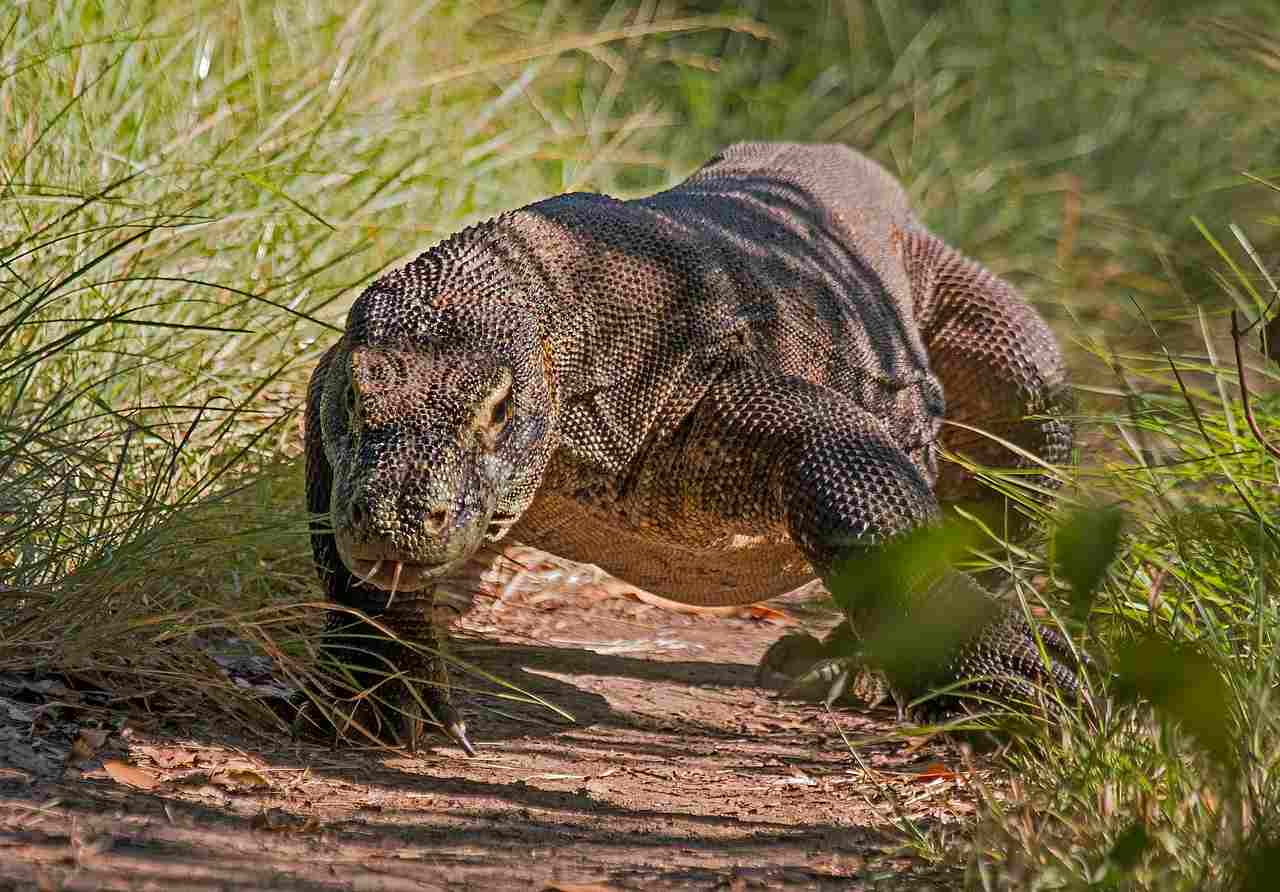
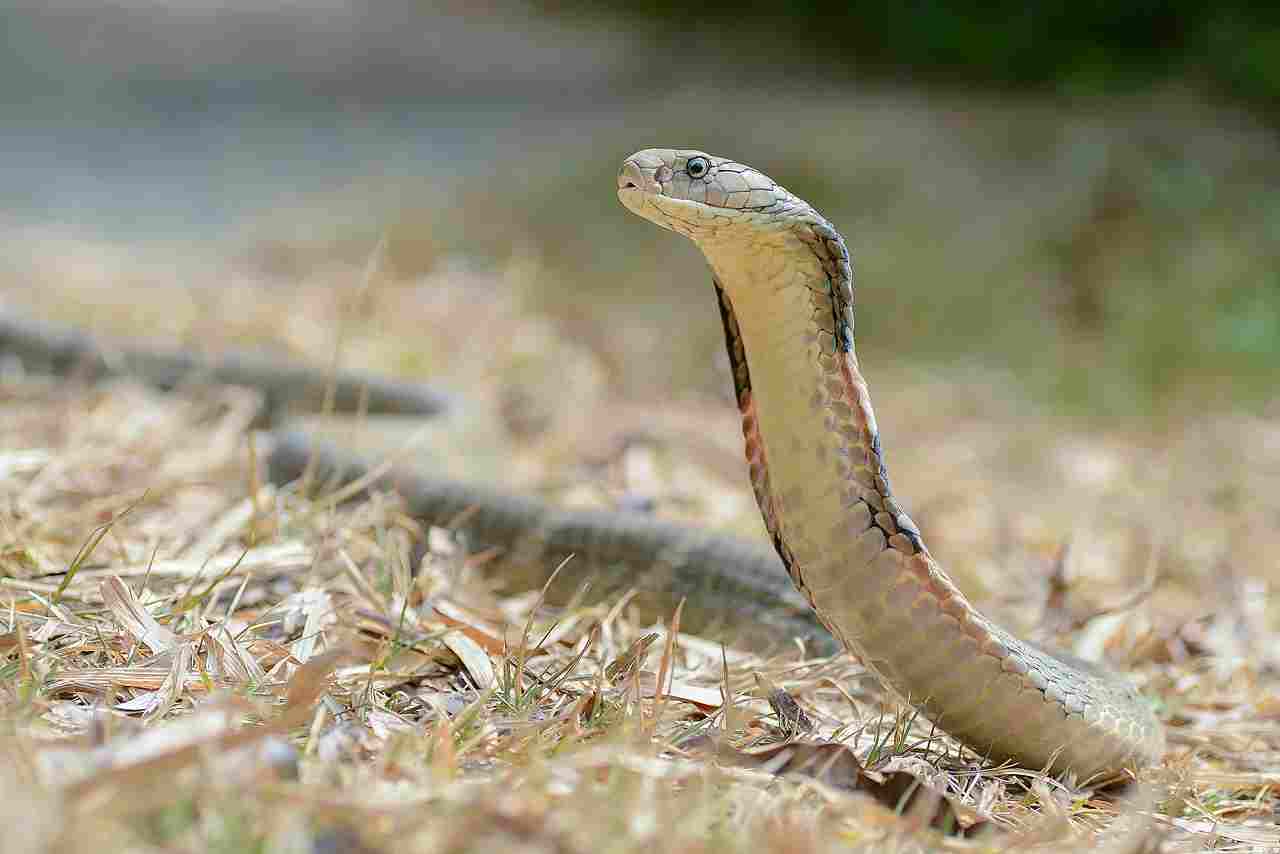
Komodo Dragon:
Prefers dry open grasslands and savannas.
Found on several Indonesian islands, including Komodo, Rinca, Flores, and Gili Motang.
King Cobra:
Inhabits a variety of environments, including forests and grasslands.
Found in South and Southeast Asia, including India and Southeast China.
Comparison:
While both are adaptable, Komodo Dragons have a more specific habitat preference compared to the widespread distribution of King Cobras.
Ecological Implications:
Habitat preferences influence their interactions with other species and the overall balance of ecosystems.
13. Tracks:
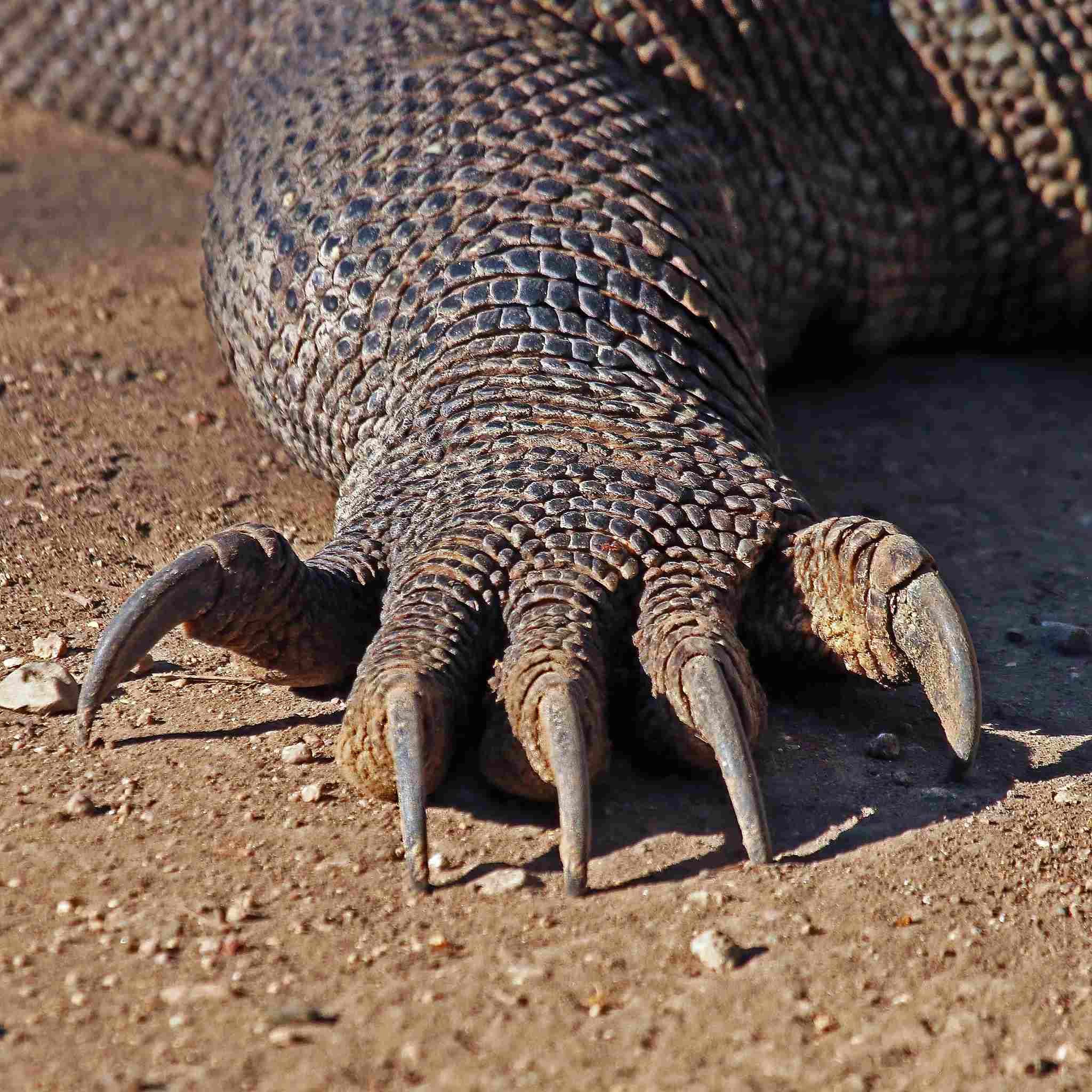
Komodo Dragon:
Clawed tracks with distinct imprints of their robust feet.
King Cobra:
Slithering trail with no distinct footprints.
Comparison:
Komodo Dragons leave visible claw marks, whereas King Cobras leave a trail without footprints.
Ecological Implications:
Tracking can be important for researchers studying the behavior and distribution of these species in their natural habitats.
14. Lifespan:
Komodo Dragon:
Typically lives up to 20-30 years in the wild.
King Cobra:
Average lifespan of 20-30 years in the wild.
Comparison:
Both species have similar lifespans in their natural habitats.
Ecological Implications:
Long lifespans contribute to their roles as predators and competitors in their respective ecosystems.
15. Mode of Feeding:
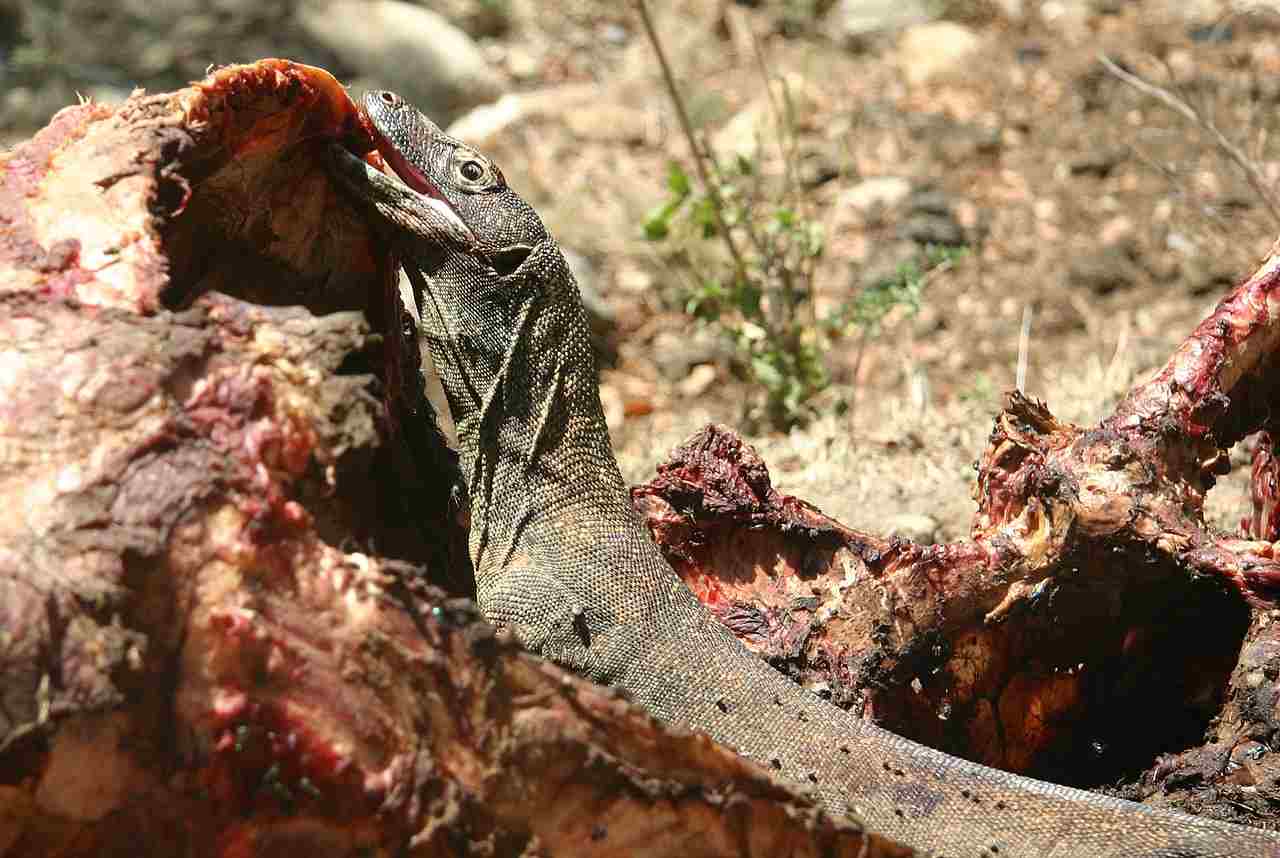
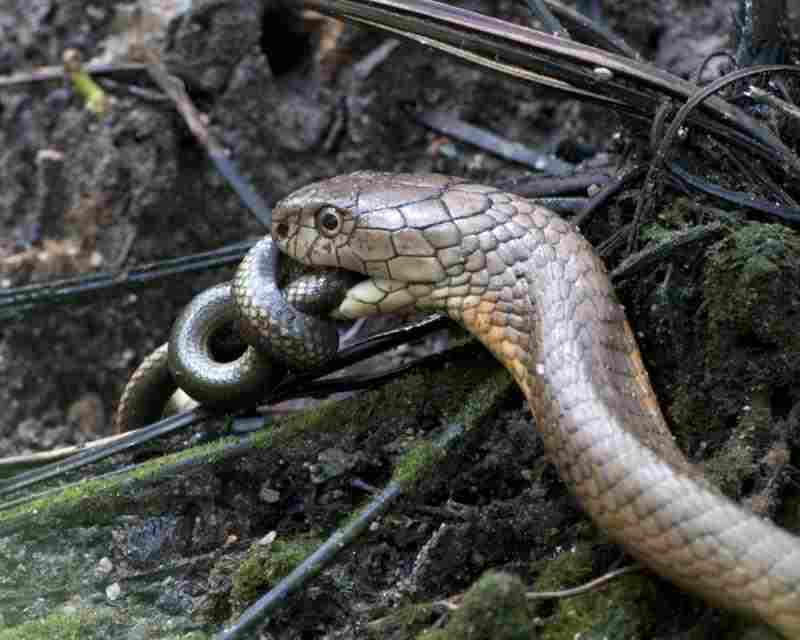
Komodo Dragon:
Carnivorous, feeding on a variety of prey including mammals and birds.
Uses a combination of venom and bacterial infection from its saliva to incapacitate and consume prey.
King Cobra:
Carnivorous, preying mainly on other snakes, but also on rodents and birds.
Injects venom to subdue and consume prey.
Comparison:
Both are top predators within their ecosystems, employing venom as a means of subduing prey.
Ecological Implications:
Their feeding habits impact population dynamics and the balance of species within their habitats.
16. Intelligence:
Komodo Dragon:
Demonstrates problem-solving abilities and complex behaviors.
King Cobra:
Limited cognitive studies, but exhibits behaviors indicative of basic intelligence.
Comparison:
Komodo Dragons have been observed showing higher cognitive abilities compared to King Cobras.
Ecological Implications:
Intelligence influences hunting strategies, adaptation to environmental changes, and interaction with other species.
17. Social Behavior:
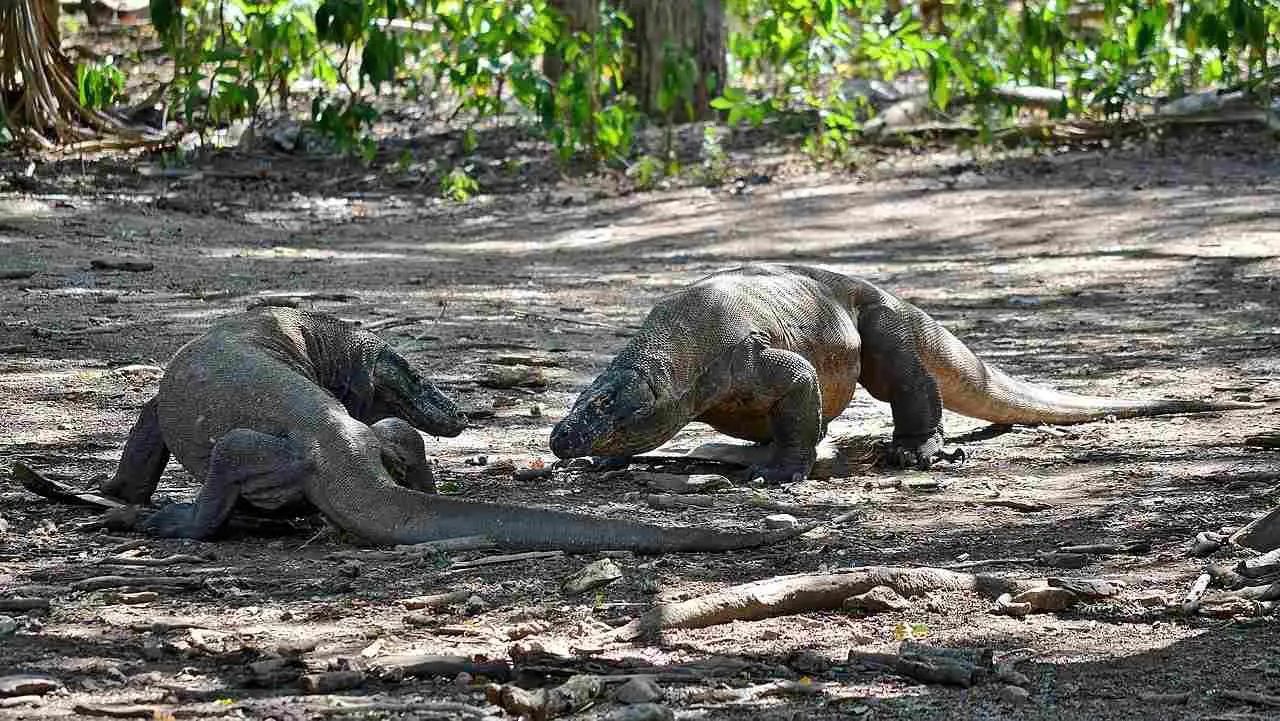
Komodo Dragon:
Generally solitary, though they may tolerate each other in certain circumstances.
King Cobra:
Typically solitary, but may engage in social interactions during the mating season.
Comparison:
Both species exhibit a predominantly solitary lifestyle.
Ecological Implications:
Solitary behavior affects their territoriality and resource utilization within their ecosystems.
18. Mode of Reproduction:
Komodo Dragon:
Oviparous; females lay eggs in nests.
No parental care beyond nesting.
King Cobra:
Oviparous; lays eggs in suitable locations.
No parental care beyond protecting the eggs.
Comparison:
Both species rely on egg-laying reproduction with minimal parental involvement.
Ecological Implications:
Reproductive strategies impact population dynamics and species distribution within their ecosystems.
19. Parental Behavior:
Komodo Dragon:
Limited parental care; females may guard nests.
King Cobra:
Females may guard the eggs until hatching.
Comparison:
Both exhibit minimal parental care, primarily protecting the eggs.
Ecological Implications:
Parental involvement influences the survival rates of offspring and contributes to the balance of species in their habitats.
20. Proximity to Human-Inhabited Areas:
Komodo Dragon:
Found on remote islands, with limited interaction with human settlements.
King Cobra:
Can be found in close proximity to human habitats, especially in rural areas.
Comparison:
King Cobras have a higher likelihood of encounters with humans due to their habitat preferences.
Ecological Implications:
Proximity to human settlements increases the potential for conflicts and impacts conservation efforts.
21. Behavior Toward Humans:
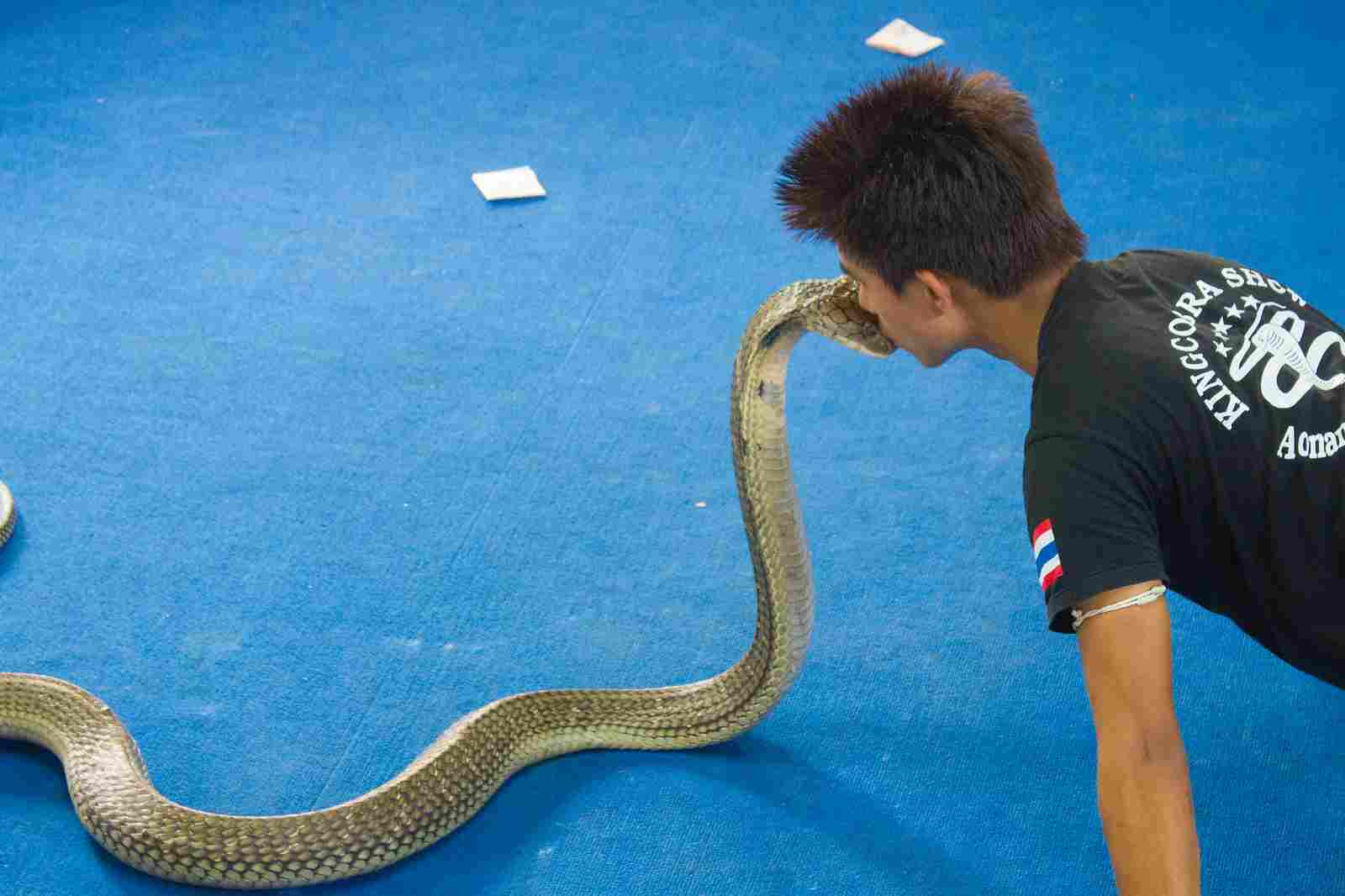
Komodo Dragon:
Generally avoids humans; can be aggressive if threatened.
King Cobra:
Tends to avoid humans but may become aggressive if cornered or provoked.
Comparison:
Both species typically avoid confrontations with humans but can become defensive if threatened.
Ecological Implications:
Understanding their behavior toward humans is crucial for promoting coexistence and mitigating conflicts.
22. Danger Posed to Humans:
Komodo Dragon:
Potentially dangerous; capable of delivering a venomous bite with infectious saliva.
Known to attack humans, especially if cornered or provoked.
King Cobra:
Highly venomous; a bite can be fatal without prompt medical treatment.
Generally avoids human confrontation but may become aggressive if threatened.
Comparison:
Both pose significant dangers to humans, with potential for serious injury or fatality.
Ecological Implications:
Human encounters can impact the perception and conservation of these species, leading to conflicts and retaliatory measures.
23. Associated Precautions:
Komodo Dragon:
Caution advised when in their natural habitats; avoid provoking or cornering them.
King Cobra:
Awareness of their presence, especially in areas they inhabit; seek professional help if encountered.
Comparison:
Precautions involve understanding the behavior of each species and taking measures to avoid accidental encounters.
Ecological Implications:
Educating the public on safety precautions contributes to coexistence and the preservation of these species in their ecosystems.
24. Conservation Status:
Komodo Dragon:
Vulnerable; facing threats from habitat loss, human-wildlife conflict, and potential poaching.
King Cobra:
Not currently assessed globally; population threats include habitat loss and snake charming practices.
Comparison:
Both species face conservation challenges, with habitat degradation being a common threat.
Ecological Implications:
Conservation efforts are crucial to maintaining biodiversity and the ecological balance in their respective habitats.
*Summary of Comparison
Taxonomy:
Komodo Dragon: Varanus komodoensis
King Cobra: Ophiophagus hannah
Appearance:
Komodo Dragon: Robust build, varied coloration, serrated teeth.
King Cobra: Slender body, olive to black color, distinctive hood.
Size:
Komodo Dragon: 2-3 meters
King Cobra: 3-4 meters
Weight:
Komodo Dragon: 70-90 kg
King Cobra: 6-8 kg
Bite Force (PSI):
Komodo Dragon: 600 PSI
King Cobra: Venomous bite, no quantified PSI
Physical Offensive Advantages:
Komodo Dragon: Powerful bite, venomous saliva.
King Cobra: Venomous bite with neurotoxins.
Physical Defensive Advantages:
Komodo Dragon: Tough, scaly skin, tail for defense.
King Cobra: Warning hood, agile movements.
Speed:
Komodo Dragon: Up to 20 km/h
King Cobra: Up to 12 km/h (slithering)
Agility:
Komodo Dragon: Moderately agile on land and in water.
King Cobra: Highly agile on land and in trees.
Senses:
Both rely on excellent senses for hunting and navigating.
Overall Physical Capacity:
Komodo Dragon: Versatile for terrestrial and semi-aquatic environments.
King Cobra: Agile, adapted for arboreal and terrestrial movement.
Habitat Preference and Geographic Region:
Komodo Dragon: Dry grasslands, Indonesian islands.
King Cobra: Various environments, South and Southeast Asia.
Tracks:
Komodo Dragon: Clawed tracks.
King Cobra: Slithering trail.
Lifespan:
Both have an average lifespan of 20-30 years.
Mode of Feeding:
Both are carnivorous, using venom for subduing prey.
Intelligence:
Komodo Dragon demonstrates higher cognitive abilities.
Social Behavior:
Both are generally solitary.
Mode of Reproduction:
Both are oviparous with minimal parental care.
Proximity to Human-Inhabited Areas:
Komodo Dragon: Remote islands.
King Cobra: Proximity to human habitats, especially in rural areas.
Behavior Toward Humans:
Both generally avoid humans but can become aggressive if threatened.
Danger Posed to Humans:
Both pose significant dangers with potential for serious injury or fatality.
Associated Precautions:
Precautions involve understanding behavior and avoiding accidental encounters.
Conservation Status:
Komodo Dragon: Vulnerable
King Cobra: Not globally assessed; threats include habitat loss.
Conclusion
I. Similarities:
Both are top predators in their ecosystems.
Face threats from habitat loss and human-wildlife conflict.
II. Differences:
Differ in size, habitat preferences, and the nature of the dangers they pose to humans.
Varied ecological roles due to differences in their physical characteristics and behaviors.
